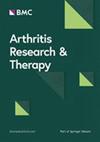The diagnostic utility of lung ultrasound in the assessment of interstitial lung disease associated with rheumatoid arthritis
IF 4.6
2区 医学
Q1 Medicine
引用次数: 0
Abstract
To investigate the diagnostic accuracy of lung ultrasound (LUS) for interstitial lung disease (ILD) in patients with rheumatoid arthritis (RA). This retrospective study included patients over 18 years with RA evaluated at the Department of Rheumatology and Immunology of Shantou Central Hospital. All patients underwent chest high-resolution computed tomography (HRCT) and LUS within one month. The LUS was performed in a total of 50 scanning sites (ScS), and the number of B-lines present in each ScS was counted and summed up as B-lines score. A positive judgement was given on LUS when the B-lines score exceeded 10. The presence and patterns of ILD were defined by HRCT findings. ROC curve analysis was used to calculate the accuracy of LUS to detect ILD. A total of 120 RA patients (86 women, with a median age of 56.0 [50.0–64.0] years) were enrolled. Based on the HRCT, 76 patients were found to have radiographic ILD, with 63 exhibiting nonspecific interstitial pneumonia (NSIP) and 13 showing usual interstitial pneumonia (UIP). Sonographic ILD was detected in 76 patients who underwent LUS examination. The concordance rate between two modalities was 83.33% (Kappa value = 0.64, 95% CI 0.50–0.78). The diagnostic sensitivity and specificity of LUS were 86.84% and 77.27%, respectively. The positive predictive value, negative predictive value, a positive likelihood ratio and a negative likelihood ratio were 86.84%, 77.27%, 3.82, and 0.17, respectively. The number of B-lines in RA with ILD and without ILD on HRCT showed a significant difference (34.0 [15.0–96.5] vs. 6.5 [2.5–10.0], P < 0.001). The presence of 12 B-lines on 50 ScS was the optimal cutoff value for detecting RA-ILD (AUC = 0.89, 95% CI 0.82–0.94, sensitivity of 85.53%, specificity of 81.82%, P < 0.001). Lung ultrasound is a valuable diagnostic tool for RA-ILD and can be used as a screening method to identify patients who require further evaluation with chest HRCT.肺超声在类风湿关节炎相关肺间质性疾病诊断中的应用
探讨肺超声(LUS)对类风湿关节炎(RA)患者间质性肺疾病(ILD)的诊断准确性。本回顾性研究纳入在汕头市中心医院风湿病免疫科评估的18岁以上RA患者。所有患者均在1个月内接受胸部高分辨率计算机断层扫描(HRCT)和LUS检查。在总共50个扫描位点(ScS)中进行LUS,计算每个ScS中存在的b线数量,并将其汇总为b线评分。当b线得分超过10分时,对LUS给予肯定的评价。HRCT结果确定ILD的存在和类型。采用ROC曲线分析计算LUS检测ILD的准确性。共纳入120例RA患者(86例女性,中位年龄56.0[50.0-64.0]岁)。基于HRCT, 76例患者被发现有影像学ILD,其中63例表现为非特异性间质性肺炎(NSIP), 13例表现为常规间质性肺炎(UIP)。76例行LUS检查的患者超声检查发现ILD。两种方式的一致性率为83.33% (Kappa值= 0.64,95% CI 0.50 ~ 0.78)。LUS的诊断敏感性为86.84%,特异性为77.27%。阳性预测值为86.84%,阴性预测值为77.27%,阳性似然比为3.82,阴性似然比为0.17。HRCT上有ILD和无ILD RA的b线数量差异有统计学意义(34.0 [15.0-96.5]vs. 6.5 [2.5-10.0], P < 0.001)。50个ScS中存在12个b系是检测RA-ILD的最佳临界值(AUC = 0.89, 95% CI 0.82 ~ 0.94,敏感性85.53%,特异性81.82%,P < 0.001)。肺部超声是一种有价值的RA-ILD诊断工具,可作为一种筛查方法,以确定需要胸部HRCT进一步评估的患者。
本文章由计算机程序翻译,如有差异,请以英文原文为准。
求助全文
约1分钟内获得全文
求助全文
来源期刊

Arthritis Research & Therapy
RHEUMATOLOGY-
CiteScore
8.60
自引率
2.00%
发文量
261
审稿时长
14 weeks
期刊介绍:
Established in 1999, Arthritis Research and Therapy is an international, open access, peer-reviewed journal, publishing original articles in the area of musculoskeletal research and therapy as well as, reviews, commentaries and reports. A major focus of the journal is on the immunologic processes leading to inflammation, damage and repair as they relate to autoimmune rheumatic and musculoskeletal conditions, and which inform the translation of this knowledge into advances in clinical care. Original basic, translational and clinical research is considered for publication along with results of early and late phase therapeutic trials, especially as they pertain to the underpinning science that informs clinical observations in interventional studies.
 求助内容:
求助内容: 应助结果提醒方式:
应助结果提醒方式:


